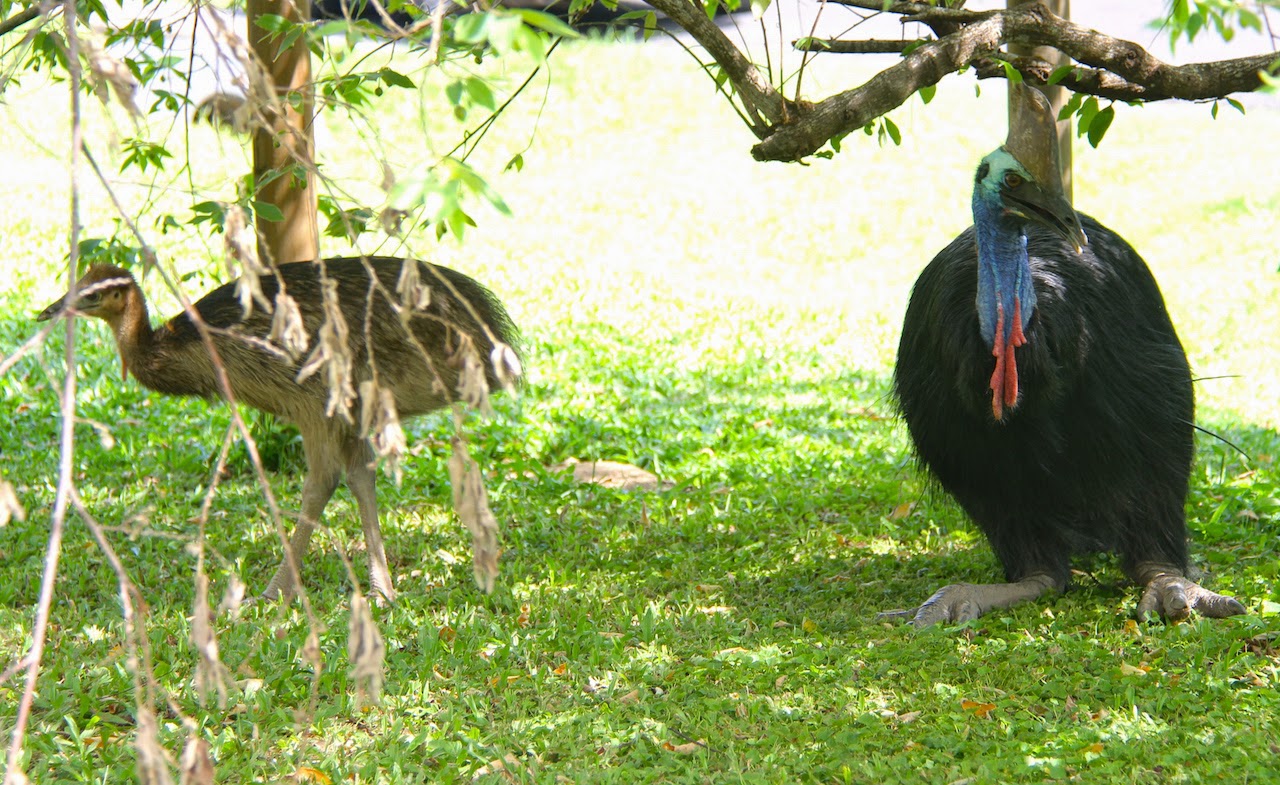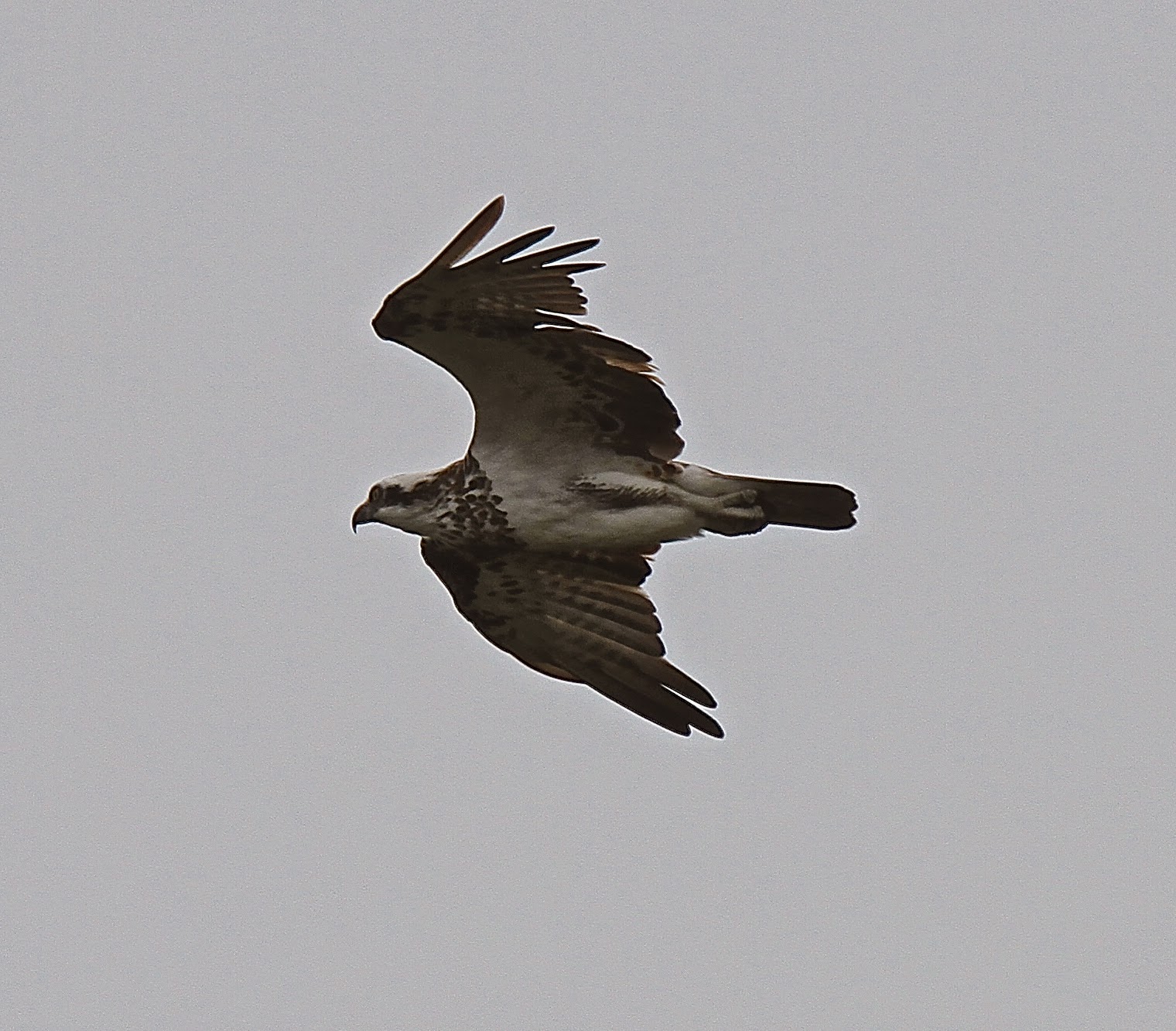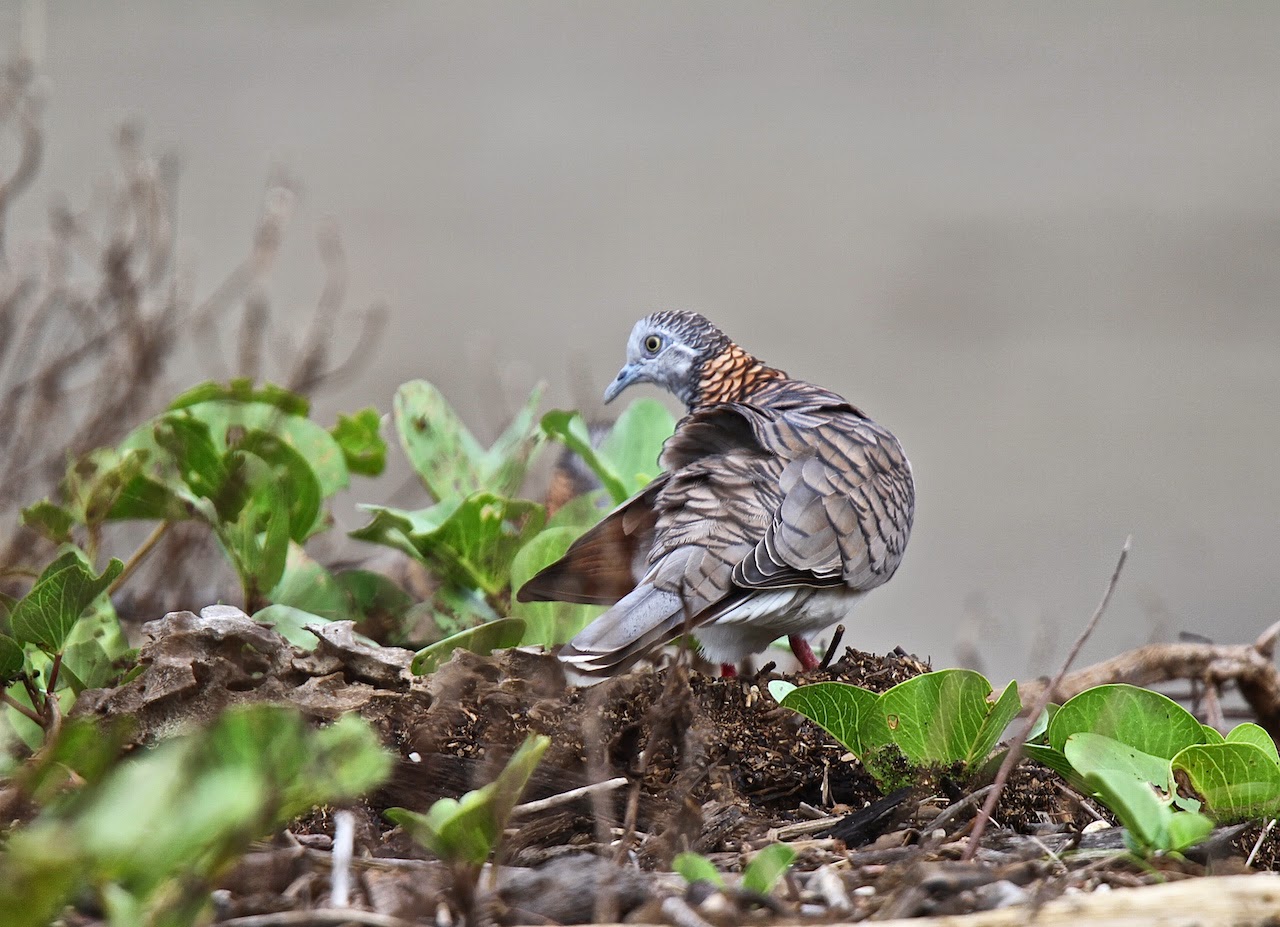Cyclone Nathan has come and gone, once again, with little impact on far north Queensland. The cyclone crossed the coastline around Cape Flattery at 4am, low tide on Thursday, and not further south nor at high tide as earlier predicted. There was great concern as the King Tides this week, if combined with a cyclonic storm surge, would have been disastrous for coastal communities.
Without any storm surge the King Tide of 3.42 metres on Thursday still covered the end of the road at Coquette Point.

 Before I opened my eyes Thursday morning I knew the weather was fine, at sunrise the kookaburras, high in the Melaleuca trees, started singing that it was a fine day and their song-message echoed across the Johnstone River Valley and they were at it again this morning.
Before I opened my eyes Thursday morning I knew the weather was fine, at sunrise the kookaburras, high in the Melaleuca trees, started singing that it was a fine day and their song-message echoed across the Johnstone River Valley and they were at it again this morning.Today the BOM radar shows most of FNQ clear of rain, which is extraordinary for March. The rain signature of Nathan can be seen in the Gulf. TC Nathan dropped only 9mm of rain at Coquette Point and the whole region has a significant rain deficit for the 2015 'wet season'.
The big tides again overtopped the dunes on the Ocean front and filled the CoquettePoint wetlands. As the tide dropped the rush of water out of the lagoons caused more erosion on the back of the spit.
On the Ocean front the big tides have swept the beach clean of debris and deposited an additional 1/2 metre of sand. It is natures way, win some, lose some.



 As I walked along the beach I was surprised to see a beach-stone curlew run out in front of me. Then I saw the men with the dog; they are locals from Coquette Point and even though they are ignoring the 'no dogs on beach signs' at least, this time, they had the dog on a lead.
As I walked along the beach I was surprised to see a beach-stone curlew run out in front of me. Then I saw the men with the dog; they are locals from Coquette Point and even though they are ignoring the 'no dogs on beach signs' at least, this time, they had the dog on a lead.However, the sense of smell is so strong in most birds and animals that the mere presence and smell of a dog will cause them to panic.
The Coquette Point beach is one of the very few 'no dog beaches' in the Shire and that is because the area is a significant shore-bird breeding, feeding and nesting area. The adjacent Coquette Point Wetlands and Moresby Range National Park are part of the World Heritage Wet Tropics.
Out on the sandbar bar-tailed godwits ran for crabs with greater sand plovers and red-capped plovers.
 The red-capped plovers have been absent from Coquette Point over summer and their return signals the start of their breeding season.
The red-capped plovers have been absent from Coquette Point over summer and their return signals the start of their breeding season.The male red-capped plovers are resplendent in breeding plumage.

Although the red-capped plovers are resident in FNQ they are nomadic in the region.
The Pied Oyster Catcher pair were on the beach fishing but with only one chick. There has been no sign of the other chick for several weeks.

The pair of beach stone curlews at the western end of the beach got very upset when the pied oyster catchers strode past their spot. The territorial cries of the curlews drove the pied oyster-catchers out onto the sandbars for some peace and quiet.

A pair of Osprey were fishing overhead and one caught a small fish and ate it in mid flight.

 The young female Osprey got a soaking in the surf and just made it to a tree branch where she shook her feathers in the wind to dry off.
The young female Osprey got a soaking in the surf and just made it to a tree branch where she shook her feathers in the wind to dry off.The larger, older Osprey kept an eye on the wet and seemingly distressed juvenile.
 I counted 20 crested terns on the sandbar and in the air. There were a couple of juveniles in the flock.
I counted 20 crested terns on the sandbar and in the air. There were a couple of juveniles in the flock.A few whimbrels were hunting on the mangrove creek banks.

 Sacred Kingfisher was catching the last rays of the setting sun on an old log.
Sacred Kingfisher was catching the last rays of the setting sun on an old log. 
 As I walked back along the spit I was astonished to see a bar-shouldered dove, also known as the mangrove dove, standing on a log in front of the 'Nesting Seabird' sign and appeared to be reading the sign! These doves are exquisitely marked and although they are common in coastal northern Australia it is the first time I have seen them at Coquette Point and they are not on Billie Gill's bird list for Coquette Point. Also, this is my first file photo of this bird. A good population of these birds are on Dunk Island and so it would be nice to think they understand the sign and will start to nest on the Coquette Point Spit.
As I walked back along the spit I was astonished to see a bar-shouldered dove, also known as the mangrove dove, standing on a log in front of the 'Nesting Seabird' sign and appeared to be reading the sign! These doves are exquisitely marked and although they are common in coastal northern Australia it is the first time I have seen them at Coquette Point and they are not on Billie Gill's bird list for Coquette Point. Also, this is my first file photo of this bird. A good population of these birds are on Dunk Island and so it would be nice to think they understand the sign and will start to nest on the Coquette Point Spit.
 Cassowary Snout and Jessie were out and about walking together again on Wednesday. I saw them on two occasions. If they are still courting it is the longest courtship in history. On Wednesday they walked up from the mangroves with muddy feet, they went through the nursery, into the orchard and straight to the breadfruit trees. Jessie was leading and I have noticed if there is some perceived danger she will always lead. Notice the side look at the crocodile statue in the pond, more about that later.
Cassowary Snout and Jessie were out and about walking together again on Wednesday. I saw them on two occasions. If they are still courting it is the longest courtship in history. On Wednesday they walked up from the mangroves with muddy feet, they went through the nursery, into the orchard and straight to the breadfruit trees. Jessie was leading and I have noticed if there is some perceived danger she will always lead. Notice the side look at the crocodile statue in the pond, more about that later.

Snout went to the bread-fruit tree searching for ripe fruit.
While Snout was looking up at the tree Jessie found some ripe breadfruit on the ground and with what sounded like a growl would not share the fruit with Snout.
When she finished eating, cassowary Jessie put on a display of submissiveness by bowing her head. "Sorry mate I ate the lot'. She had left nothing for Snout to eat. They walked off into the rainforest Jessie following Snout.


 On Thursday afternoon I found Cassowary Hero and his chick resting under the shady branches of a Panama berry tree.
On Thursday afternoon I found Cassowary Hero and his chick resting under the shady branches of a Panama berry tree.After a while the chick wandered off to pick a snack of berries for himself, already he is showing independence.



Cassowary Ky has changed, he is very alert and nervous. On Wednesday I was with a customer looking at fruit trees. We heard a loud drumming growl and I saw it was Ky. The first drumming sound I have heard from Ky. He was attacking the plastic crocodile head in the water-lily pond. When the crocodile didn't respond Ky sat down nearby looking at the plastic croc head. He hung about for over fifteen minutes and then wandered off into the rainforest. Unfortunately, I did not have the camera with me to captures Ky's attack on the plastic croc, but I can only assume he recognised it and perhaps he had recently had an encounter with a crocodile in the mangroves.
With the cyclone and all the associated cloud cover gone the hot and humid days have returned. Ky is once again keeping cool in the pool.
My bird of the week is the dollar bird.
Three dollar birds arrived and made their presence heard with loud clucking calls around the nursery this week.
The dollar bird is a migrant and visits Australia around September to breed. This month the dollar birds will return to Papua New Guinea and other Pacific Islands. On their way these birds dropped into the nursery to rest and feed. Perhaps they were waiting for the low pressure system to move on.
The dollar bird gets its name from the large, white spots on each wing. This is only visible when the bird is in flight.
Enjoy your holiday to the Pacific Islands Dollar Bird and we will see you back in September.
 This dollar bird caught a large green insect, he had difficulty swallowing it, he turned his head upside down and it didn't go down so he tossed his head back to make a slide for the insect and it went down.
This dollar bird caught a large green insect, he had difficulty swallowing it, he turned his head upside down and it didn't go down so he tossed his head back to make a slide for the insect and it went down.


Several flocks of red-tailed black-cockatoos have taken over the light poles around Innisfail where they sleep at night. During the day they venture down to the coast to feed on the beach-almond fruits. These cockatoos are nomadic birds and visit the coast when the fruits of the beach-almond, Terminalia catappa, are mature. The small kernel of the beach almond is claimed to have many health properties including as an aphrodisiac. The red--tailed black-cockatoos generally start their breeding season at the end of the beach-almond fruiting season.
I caught a cage full of pigs on Wednesday night. A lactating sow and her two large suckers as well as a very pregnant sow. The ripe breadfruit is a favoured food of pigs, and there is always a few fruit at the top of the tree that I cannot reach and they fall to the ground, where they attract animals like feral pigs. I set the trap open at the start of the week and when I knew the pigs were going in and out freely and feeding from the back of the cage, I set the vertical swing-open door with two new bungee cords. On Thursday morning at first light when I found the cage full of pigs I strapped the door closed at the bottom, just in case, and I waited for a friend to arrive who humanely dispatched the feral pigs for me.
This vertical push-door design of this pig cage will not catch any animal which does not push. The only animal we have in the rainforest capable of pushing open a large vertical wire door is a feral pig. This design of pig cage will not catch cassowaries, quolls, possums or wallabies. The trip mechanism door openings of other pig cages are catching cassowaries and other animals. The advantage of the vertical push-open door type of cage is that it will continue to catch feral pigs all night long and with the door closing after every entry.
Unfortunately, when a cassowary is caught in a pig cage it will panic and try to get out. I know of a cassowary which dislodged its casque in trying to escape from a pig cage and because the injury was so horrific the cassowary had to be euthanised. I have heard other stories of this happening all too often around the Cassowary Coast.
As a landowner I understand it is my responsibility to control feral animals on my land. I do not expect the State Government nor the Council to subsidise feral pest problems or any other pest problems I have on my land, nor should they have to. However, I do expect the State Government and the Council to be proactive and control feral pests on the lands they own.
No native animal causes more soil displacement than a feral pig. With the urgent need to stop the transport of soil between farms because of the banana disease, Panama tropical race 4, the focus must be on feral pig control. Farmers do not want pig hunters and dogs running from farm to farm chasing feral pigs and inadvertently transporting soil. Therefore farmers and landholders, including State and Council landholders in the Shire, need to organise to mass produce cassowary safe pig cages that landholders can pay for at cost to use on their properties. The Men's Shed, unemployed workers and Correctional Services could all be involved in a programme that might deliver a positive outcome for feral pig control in the Region and provide meaningful work and training for the groups involved.
There has got to be a better solution than permitting pig hunters to roam with guns and dogs on public and private lands as has been suggested by some.
A reminder that Friends of Ninney Rise will be holding a Cocktail Party at Ninney Rise on Friday 27 March, 5 to 6.30pm. Please ring 0409588715 to book.
Please support Bernie Holden's call for Innisfail to help the people of Vanuatu.
| ||||||||||||































No comments:
Post a Comment